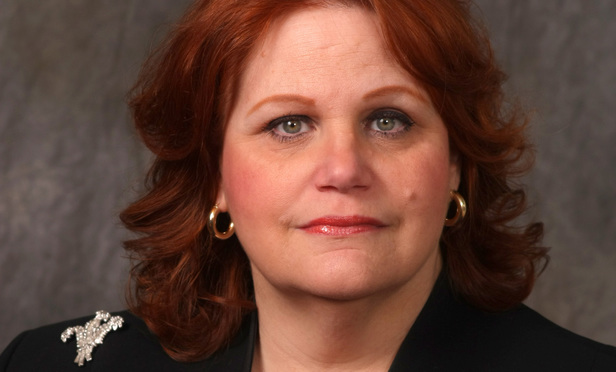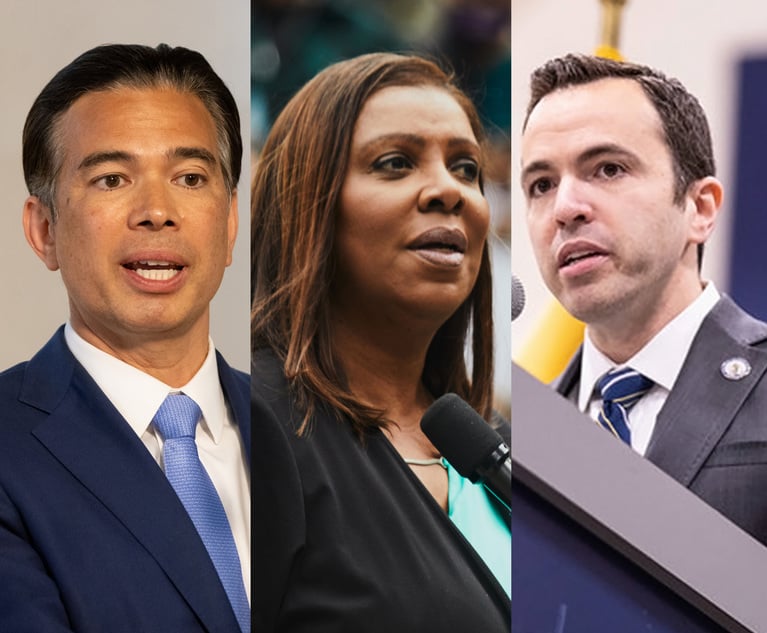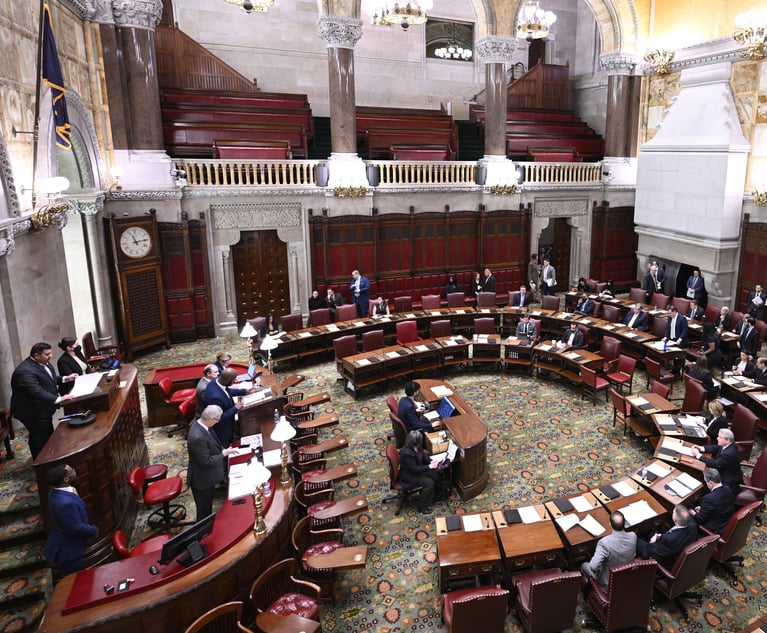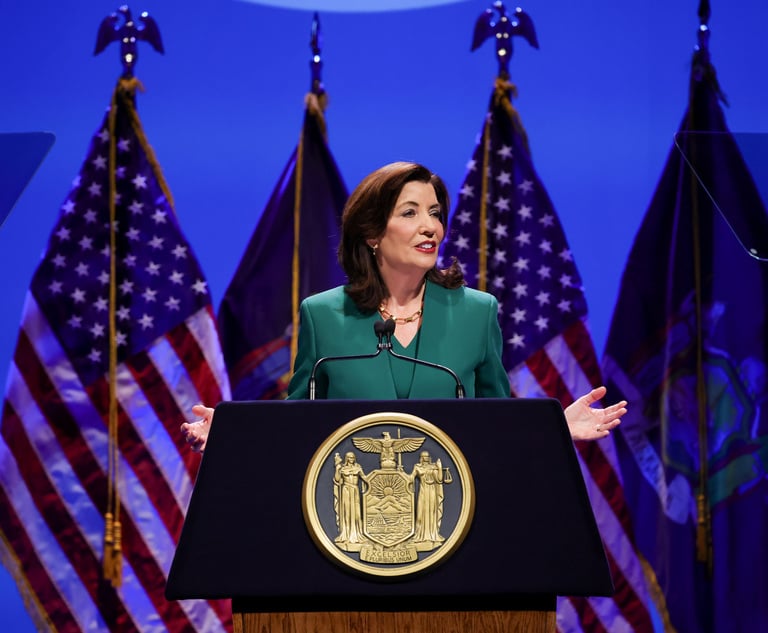Looking to the Ocean for Power, and a Problem
State Environmental Regulation columnist Charlotte A. Biblow writes: In recent months, New York state has taken a number of significant steps forward toward the state's previously announced goal of obtaining 50 percent of New York's electricity from renewable sources by 2030. Perhaps the most important of these recent steps is an order, issued and effective on July 12, 2018, in which the New York State Public Service Commission (PSC) established an “Offshore Wind Standard and Framework for Phase I Procurement.”
September 26, 2018 at 02:40 PM
8 minute read
 Charlotte A. Biblow
Charlotte A. Biblow
In recent months, New York state has taken a number of significant steps forward toward the state's previously announced goal of obtaining 50 percent of New York's electricity from renewable sources by 2030.
Perhaps the most important of these recent steps is an order, issued and effective on July 12, 2018, in which the New York State Public Service Commission (PSC) established an “Offshore Wind Standard and Framework for Phase I Procurement” (the OSW Order). In the OSW Order, the PSC required the New York State Energy Research and Development Authority (NYSERDA) to solicit (as an initial step) approximately 800 megawatts (MW) of offshore wind renewable energy credits (ORECs). An OREC represents one megawatt-hour (MWh) of electricity generated from offshore wind resources and consumed by a retail customer in New York State. That initial solicitation is scheduled to be issued in the fourth quarter of 2018 and selected projects will be awarded in the second quarter of 2019. A second solicitation will be issued in 2019, if needed, to achieve the 800 MW objective. The offshore wind industry is projected to be a $6 billion industry, generating 5,000 new jobs, almost half of which will be long-term career opportunities.
Once the initial solicitation and awards take place, New York will be on a clear and inexorable path to reaching its goal of 2,400 MW of new offshore wind generation by 2030. That is enough electricity to power 1.2 million New York households.
Background
The OSW Order arose out of the PSC's adoption of its Clean Energy Standard (CES). The CES, enacted by the PSC on Aug. 1, 2016, is designed to achieve the statewide goal of 50 percent renewable generation resources by 2030, known as the “50 by 30” goal.
NYSERDA estimates in its publication, “Benefits of Offshore Wind,” that 2,400 MW of offshore wind energy would annually reduce greenhouse gas emissions in New York State by more than five million short tons. This reduction is equivalent to removing nearly one million cars from the road by 2030.
At the time it adopted the CES, the PSC recognized that New York has a substantial potential for offshore wind production. It tasked NYSERDA with studying the appropriate mechanisms to reach the goal and making recommendations for the PSC's consideration.
Gov. Andrew Cuomo also has a significant track record of supporting offshore wind production. As part of his 2017 State of the State Address, he set a wind energy development goal of 2.4 gigawatt (GW) by 2030. In his 2018 State of the State Address, the governor called for the procurement of at least 800 MW of offshore wind power ORECs by 2019.
In response to the CES, NYSERDA conducted 20 studies on a variety of potential issues related to offshore wind power. These studies included environmental, social, economic, regulatory, and infrastructure-related issues, an assessment of ports and infrastructure, an aviation and radar assets study, a birds and bats study, a cable landfall permitting study, a fish and fisheries study, a marine mammals and sea turtles study, an environmental sensitivity analysis, a fish and fisheries study, a sand and gravel resources study, and a shipping and navigation study. Thereafter, on Jan. 29, 2018, NYSERDA released the New York State Offshore Wind Master Plan (the Master Plan), in essence, a roadmap for offshore wind development.
Among other things, the Master Plan identified the most favorable sites for offshore wind development off New York's Atlantic Coast, described the economic and environmental benefits of offshore wind energy development, addressed mechanisms to procure offshore wind energy at the lowest cost to ratepayers, recommended measures to mitigate potential impacts of offshore wind energy development, and identified infrastructure requirements and workforce opportunities. It also established technical working groups to develop best practices for development and provided options for the purchase of offshore wind energy in an effort to ensure the lowest cost to the ratepayer.
In preparing the Master Plan, NYSERDA studied a 16,740 square mile area in the Atlantic Ocean extending from New York City and the south shore of Long Island to beyond the continental shelf. This area is regulated by the federal Bureau of Ocean Energy Management, which already has entered into a number of lease agreements for wind development in areas along the Atlantic coast between New Jersey and New England and which is expected to issue additional leases near the end of 2019.
The Master Plan reported that, in Europe, over 12.6 GW of offshore wind resources are in operation and an additional 24.2 GW have been approved. Moreover, NYSERDA observed in the Master Plan that the cost of offshore wind in Europe had fallen substantially as a result of local infrastructure development and economies of scale. NYSERDA projected that, upon achieving the 2,400 MW goal by 2030, the cost to obtain offshore wind would be lower than the cost to procure land-based renewables in New York. According to information on NYSERDA's website, development of the first 800 MW of offshore wind only would result in a 0.14 to 0.76 percent rate increase for ratepayers, or less than $0.76 per month for the typical residential customer. See “New York State Offshore Wind Frequently Asked Questions.”
In the Master Plan, NYSERDA pointed out that, because of the size of towers and blades, construction of offshore wind projects requires regionally-based waterfront facilities. NYSERDA screened 65 port sites within the state and determined that New York Harbor, the Hudson River, and Long Island contain numerous suitable candidates for manufacturing, assembly, operations, and maintenance.
After reviewing NYSERDA's Master Plan, the PSC concluded that a series of actions related to offshore wind are necessary to help achieve the CES goal. That culminated in the July 20, 2018 OSW Order.
The PSC's Order
In the July 20 order, the PSC adopted the goal of procuring 2.4 GW of new offshore wind generation facilities by 2030. The July 20 order also directed that Phase I of the offshore procurement program include procurement solicitations during 2018 and 2019, for approximately 800 MW of offshore wind, and an obligation on the part of utilities (referred to in the order as load-serving entities or LSEs) to obtain, on behalf of their retail customers, the ORECs procured in Phase 1 in an amount proportional to their load. The July 20 order also authorized NYSERDA to expend up to $9,797,000 for salary and overhead expenses for the OSW program through Dec. 31, 2023 as well as for certain other OSW program expenses and costs.
Next Steps
To prepare for its first solicitation, NYSERDA released a request for information soliciting feedback regarding specifics of the procurement process. NYSERDA received more than two dozen comments, ranging from Anbaric Development Partners (a developer of independent open access transmission lines) and the City of New York to the United Steelworkers and the Workforce Development Institute (a New York State non-profit). Using this information, NYSERDA, in consultation and coordination with the New York Power Authority and the Long Island Power Authority, will draft and issue the request for proposals soliciting bids from offshore wind projects and award OREC contracts in the second quarter of 2019.
As all of this suggests, offshore wind development is coming to New York. Interested parties will find new, updated information about the process on NYSERDA's offshore wind development website.
Ocean Acidification
Not everything about the ocean is rosy, however. Consider ocean acidification.
According to the National Ocean Service, an office of the National Oceanic and Atmospheric Administration within the U.S. Department of Commerce, ocean acidification refers to a reduction in the pH of the ocean over an extended period of time, caused primarily by the uptake of carbon dioxide from the atmosphere. See What Is Ocean Acidification.
New York is taking a role in studying and addressing the problem of ocean acidification. The New York State Department of Environmental Conservation recently convened an ocean acidification task force, as required by Assembly Bill A10264, which became law in 2016. See Ocean Acidification Impacts. The task force was formed to identify the causes and factors contributing to ocean acidification and to evaluate ways of addressing the problem by applying the best available science as to ocean acidification and its anticipated impacts.
The 2016 law requires that the task force issue a report by Dec. 31, 2018. Since the task force was appointed in August 2018, it is not clear if it will meet that deadline, or whether an extension of the deadline will be necessary. It will be interesting to review the report once it is issued.
Charlotte A. Biblow, a partner in the environmental, land use and municipal law and litigation departments of Farrell Fritz, can be reached at [email protected].
This content has been archived. It is available through our partners, LexisNexis® and Bloomberg Law.
To view this content, please continue to their sites.
Not a Lexis Subscriber?
Subscribe Now
Not a Bloomberg Law Subscriber?
Subscribe Now
NOT FOR REPRINT
© 2025 ALM Global, LLC, All Rights Reserved. Request academic re-use from www.copyright.com. All other uses, submit a request to [email protected]. For more information visit Asset & Logo Licensing.
You Might Like
View All

Federal Judge Pauses Trump Funding Freeze as Democratic AGs Plan Suit
4 minute read
Relaxing Penalties on Discovery Noncompliance Allows Criminal Cases to Get Decided on Merit
5 minute read
Bipartisan Lawmakers to Hochul Urge Greater Student Loan Forgiveness for Public-Interest Lawyers
Trending Stories
- 1Uber Files RICO Suit Against Plaintiff-Side Firms Alleging Fraudulent Injury Claims
- 2The Law Firm Disrupted: Scrutinizing the Elephant More Than the Mouse
- 3Inherent Diminished Value Damages Unavailable to 3rd-Party Claimants, Court Says
- 4Pa. Defense Firm Sued by Client Over Ex-Eagles Player's $43.5M Med Mal Win
- 5Losses Mount at Morris Manning, but Departing Ex-Chair Stays Bullish About His Old Firm's Future
Who Got The Work
J. Brugh Lower of Gibbons has entered an appearance for industrial equipment supplier Devco Corporation in a pending trademark infringement lawsuit. The suit, accusing the defendant of selling knock-off Graco products, was filed Dec. 18 in New Jersey District Court by Rivkin Radler on behalf of Graco Inc. and Graco Minnesota. The case, assigned to U.S. District Judge Zahid N. Quraishi, is 3:24-cv-11294, Graco Inc. et al v. Devco Corporation.
Who Got The Work
Rebecca Maller-Stein and Kent A. Yalowitz of Arnold & Porter Kaye Scholer have entered their appearances for Hanaco Venture Capital and its executives, Lior Prosor and David Frankel, in a pending securities lawsuit. The action, filed on Dec. 24 in New York Southern District Court by Zell, Aron & Co. on behalf of Goldeneye Advisors, accuses the defendants of negligently and fraudulently managing the plaintiff's $1 million investment. The case, assigned to U.S. District Judge Vernon S. Broderick, is 1:24-cv-09918, Goldeneye Advisors, LLC v. Hanaco Venture Capital, Ltd. et al.
Who Got The Work
Attorneys from A&O Shearman has stepped in as defense counsel for Toronto-Dominion Bank and other defendants in a pending securities class action. The suit, filed Dec. 11 in New York Southern District Court by Bleichmar Fonti & Auld, accuses the defendants of concealing the bank's 'pervasive' deficiencies in regards to its compliance with the Bank Secrecy Act and the quality of its anti-money laundering controls. The case, assigned to U.S. District Judge Arun Subramanian, is 1:24-cv-09445, Gonzalez v. The Toronto-Dominion Bank et al.
Who Got The Work
Crown Castle International, a Pennsylvania company providing shared communications infrastructure, has turned to Luke D. Wolf of Gordon Rees Scully Mansukhani to fend off a pending breach-of-contract lawsuit. The court action, filed Nov. 25 in Michigan Eastern District Court by Hooper Hathaway PC on behalf of The Town Residences LLC, accuses Crown Castle of failing to transfer approximately $30,000 in utility payments from T-Mobile in breach of a roof-top lease and assignment agreement. The case, assigned to U.S. District Judge Susan K. Declercq, is 2:24-cv-13131, The Town Residences LLC v. T-Mobile US, Inc. et al.
Who Got The Work
Wilfred P. Coronato and Daniel M. Schwartz of McCarter & English have stepped in as defense counsel to Electrolux Home Products Inc. in a pending product liability lawsuit. The court action, filed Nov. 26 in New York Eastern District Court by Poulos Lopiccolo PC and Nagel Rice LLP on behalf of David Stern, alleges that the defendant's refrigerators’ drawers and shelving repeatedly break and fall apart within months after purchase. The case, assigned to U.S. District Judge Joan M. Azrack, is 2:24-cv-08204, Stern v. Electrolux Home Products, Inc.
Featured Firms
Law Offices of Gary Martin Hays & Associates, P.C.
(470) 294-1674
Law Offices of Mark E. Salomone
(857) 444-6468
Smith & Hassler
(713) 739-1250






